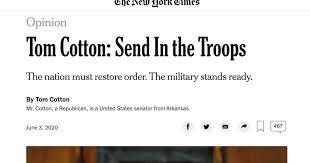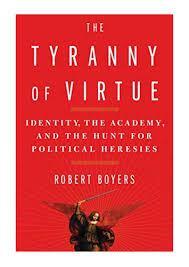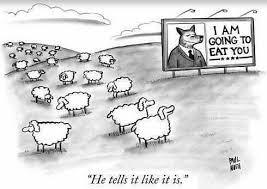The New York Times published an “op-ed” by Republican Senator Tom Cotton advocating a military crackdown on protests.

Yet many Times staffers thought differently, objecting to publication. The Times was forced to apologize; the editor responsible forced to resign.
This is today’s “cancel culture.” The paper issued a statement saying the Cotton piece did not meet its standards. What it actually transgressed was the politically correct woke catechism. With dissenters not just countered with arguments, they must be suppressed, not permitted to be heard, banished from society.

Another Times staffer, Bari Weiss, resigned in protest at the paper’s capitulation. Echoing Boyers, she criticized what she saw as its new ethos, “that the truth isn’t a collective discovery, but an orthodoxy already known to an enlightened few whose job is to inform everyone else.”

Journalistic objectivity is a modern concept. When I researched events circa 1920 for my 1973 book on Albany politics, I was surprised at how overtly partisan newspapers were. That soon gave way to neutral reporting, with opinion confined to editorial pages. This model enabled the public to shape views based on facts and reality. How quaint that sounds today.
We also once thought the internet would make people even better informed. However, while mainstream news outfits feel both an obligation to play it straight and that this serves their commercial interests — information being the product they’re selling — that doesn’t apply to internet platforms whose product is propaganda, and which can make money by feeding red meat to narrow audience slices.

A recent article in The Economist spotlights the problem by quoting a December Times report about an impeachment hearing: “the lawmakers from the two parties could not even agree on a basic set of facts.” Comments The Economist: “Which facts were real? Readers were left to guess.”
But the magazine says a new paradigm is emerging, based on “moral clarity,” a sense of right and wrong. It quotes Wesley Lowery, a Pulitzer-winning journalist, that in lieu of an objectivity obsession, reporters should “focus on being fair and telling the truth, as best as one can, based on the given context and available facts.”
There’s been a running debate over using the words “lie” or “racist” in covering Trump. I’ve long watched PBS’s Washington Week where journalists discuss the news, without slant. Often this means dancing around the obvious.

To exemplify the emerging standard, The Economist, quotes this start to a Times front page news story:
“President Trump used the spotlight of the Fourth of July weekend to sow division during a national crisis, denying his failings in containing the worsening coronavirus pandemic while delivering a harsh diatribe against what he branded the ‘new far-left fascism.'”
I’d call this telling it like it is. Indeed, every word is factual reporting. Some, like “diatribe,” are loaded words, but even that usage conforms to its dictionary definition.
Of course right and wrong can always be a matter of opinion. And “moral clarity,” for too many today, translates into the oppressive politically correct orthodoxy Boyers described.

